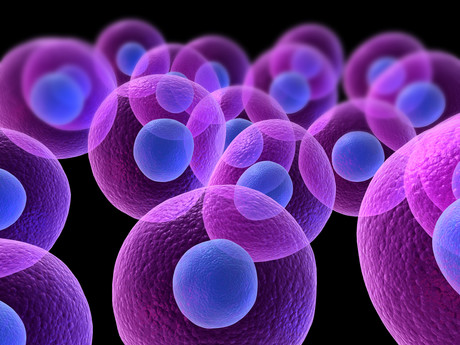Discovery allows the human eye to track a single molecule inside a living cell

Researchers at the University of Technology Sydney have developed a new microscopy technology that allows the human eye to track a single molecule and inspect its behaviour inside a living cell.
Using a new class of nanoparticle sensors — upconversion Super Dots — that convert low-energy near-infrared photons into high-energy visible emissions, scientists have defined how many single photons are needed for the human eye to track a colour-tagged single molecule inside a living cell. The answer is 4000 photons per 100 milliseconds under a simple microscope set-up.
The research, published in the Nature journal Light: Science & Applications, means problems with imaging resolution and sensitivity can be overcome using relatively inexpensive, standard microscopes.
“Subcellular research is the new frontier in biomedical science and nanoparticles are the new tools for super resolution imaging and drug delivery,” said lead author Dr Fan Wang, a senior research fellow at UTS Institute for Biomedical Materials and Devices (IBMD).
“Medicine has progressed from looking at symptoms from the outside of a person, to assess their health conditions, to looking inside using endoscopes and scans. Now we are developing new tools to enable the inspection of the individual cells in real time. At that intracellular level you get a fundamental understanding about how cancer spreads or how a particular treatment might work,” Dr Wang said.
“Our new generation of Super Dots sensors are stable, non-toxic, background-free and very uniform, making them ideal for bio-imaging,” Dr Wang said.
The research complements the volumetric imaging platform IBMD is developing to decode the traffic conditions and environment to build a 3D ‘street view’ inside living cells.
IBMD Director Professor Dayong Jin said, “This new imaging technique is capable of monitoring, or tracking, a single optical sensor with high temporal, spectral and spatial resolution through cellular compartments.”
The new technique provides a fifth dimension for our eyes to simultaneously discriminate between multiple sets of single nanoparticles sensors, and gives colour-blind observers the ability to use fluorescence microscopes, Dr Wang said.
Epilepsy pioneer elected President of Aust Academy of Science
Laureate Professor Sam Berkovic — one of the world's most respected neurologists...
CSIRO announces 300+ job cuts as part of restructure
CSIRO will need to reduce roles in its Research Units by 300–350 full-time equivalent staff...
Synchron raises $305m to advance brain–computer interfaces
Synchron's Stentrode BCI platform is billed as the world's first endovascular...





